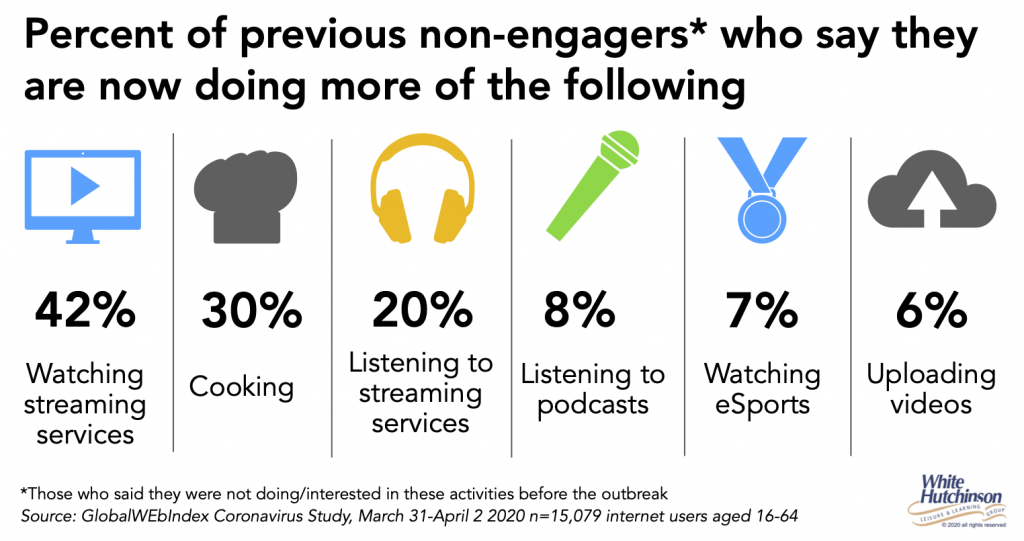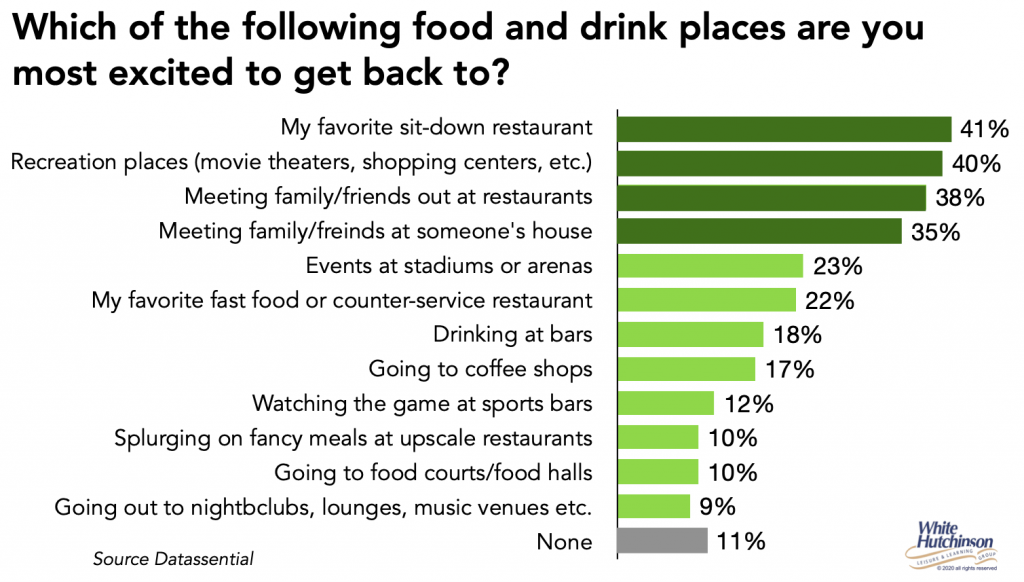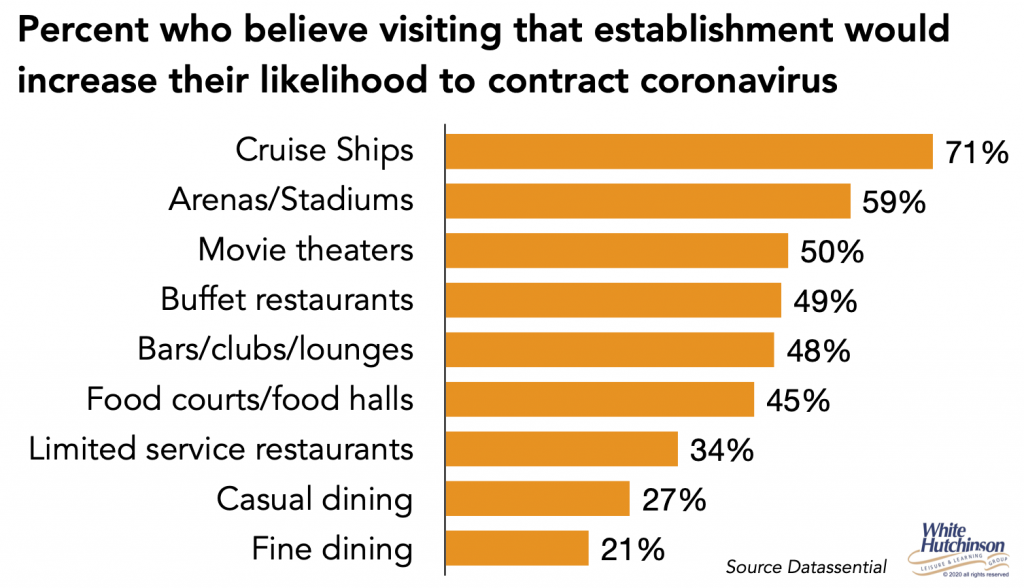While bunkered down at home, I’ve been taking long walks everyday whenever the weather permits. Here in Kansas City in the Spring, it’s a great time to take walks as all the greenery is emerging. Winters here are very gray. Even the evergreens turn gray. Every day I can see that the leaves on trees have budded or grown some more. And the iconic Spring tree in the area, the Redbud, is in full bloom (actually the buds are more violet in color, but I guess Violetbud doesn’t work too well for a name).

About one-half mile from our suburban home is a commercial retail district. On some days my walking route takes me past some of the businesses. They include a JC Penney, a fitness-health club and a number of restaurants, including a tapas and wine one. All are closed, except some of the restaurants are open for only curbside takeout and home delivery.
The other day, now almost a month into our stay-at-home lockdown here in Kansas City that has been extended to May 15th, it occurred to me that maybe people are starting to get used to not visiting those and other closed businesses, including all the different types of entertainment venues. Could it be that not visiting brick-and-mortar businesses will become a habit that will stick post-lockdown; that we will not return to our pre-coronavirus out-of-home behaviors? Instead we will just keep using the at-home and virtual substitutes we’ve learned to replace them with. Using the at-home replacements and no longer visiting the pre-lockdown physical locations could become the behavior reality.

Research on habit formation has found that it takes a minimum of 21 days to form a new habit and a little over two months (66 days) for a new behavior to become automatic. The length of the lockdown, but more important, how long businesses are closed, as many may not be allowed to open during initial phases of the unwinding of the lockdown, and even more important for some people, how long will it be before they feel safe visiting particular businesses even after they open, will determine the length of time for whether non-visits and the at-home substitutes become permanent habits rather than just temporary ones.
Covid-19 is training people to see the outside world as a dangerous place and that everyone and every common surface is a potential threat to their health, even their life. A ‘quarantine state-of-mind’ could reign for a long time after the lockdown ends.
If maintaining a six-foot social distance becomes an automatic behavior, the norm, will people want to return to crowded businesses that will make them feel uncomfortable? If the new virtual social-entertainment digital options we’ve started using at-home give us pleasure and make us feel in contact with our friends, will our need to visit social-entertainment venues be as strong as it was pre-lockdown? If we experienced entertaining and educational virtual tours of museums and cultural venues while sitting in the safety of our homes, will there still be as strong a desire to physically visit them? And for even something physical like bowling, maybe one of the new at-home digital leisure options becomes more attractive for the use of our leisure time and sure costs a lot less.
“The Covid-19 outbreak has forced recalibration of consumer habits that will see consumption patterns forever changed.” Scott McKenzie, Nielsen Intelligence Leader
We are already seeing evidence of new habits and changed future behaviors. Datassential in a national survey last week asked “Once social distancing is eased, what would prevent you from sitting down for a restaurant meal? Nearly one-quarter (23%) said they’ve come to prefer cooking and eating at home since coronavirus. An April 11-13 Harris poll asked “What are you more likely to do post Covid-19 (e.g. when the economy opens or the curve flattens)? Nearly 8 in 10 said they were more likely to watch a movie at home versus going to the movies. Nearly three-quarters (73%) said they are more likely to live stream sporting events/concerts at home than attend them.
A recent FleishmanHillard study found that the pandemic has changed what people value. Two-thirds (68%) reported the pandemic has changed the products and services they once thought were important. It could be that some of our out-of-home entertainment destinations no longer seem so important to visit. This will be a significant factor in peoples’ post-lockdown behaviors.
And a third factor affecting to what extend people will return to previous out-of-home entertainment and leisure experiences is the pandemic recession that is underway. Economist are predicting that it will continue for a considerable time. This is already significantly affecting lower wage earners and is now also starting to affect white collar workers. There will be high post-lockdown unemployment and many people will be saddled with debt they incurred to survive the lockdown and beyond. Discretionary spending for entertainment experiences will be less than pre-Covid.
Is it really safe to assume that people will have a yearning to return to all the out-of-home entertainment activities and as often as they once did? With expanding and enhanced at-home options and with many people financially strapped post-lockdown, the question is what entertainment and cultural venues and other leisure businesses will once again get their time and money. What the future just two months ago looked like is now completely changed. We are not going back to the normal of just two months ago.A national survey by Datassential found that people are most excited about getting together with family or friends and dining out. Their survey asked which food and drink places people were most excited to get back to. Although visiting recreational places had the second highest response, its excitement was based on having food and drink there.

Datassential’s surveys also found that casual and fine dining restaurants were perceived as the safest of many out-of-home experiences.

There can be little wonder getting out of the house and enjoying some food and drink would rate as the top choice. Everyone is surely watching some of the 100s of TV and internet food shows, yearning for some the food experiences they are seeing there. Although ‘eating in’ is the new lockdown ‘eating out,’ it doesn’t create the true restaurant-style eating experiences we have grown so used to. Food take-out and delivery can’t offer the same quality you get in a restaurant nor does it facilitate as great of a social experience as you get sitting around a table in a restaurant with family and friends. Eating is a biological need and we are hard-wired as a social species, so the combination of the two creates a strong draw to once again return to out-of-home dining experiences. It appears that socialization and craveability will be the primary drivers of peoples’ top choices when they do venture out of their homes. The entertainment venues that people will probably first seek post-lockdown will be the social eatertainment ones with great food and beverage offerings, the ones where you would choose to come for the food and drink and then maybe stay for the fun, the ones where the quality of the food and drink and the social experience truly act as the anchor attraction.




